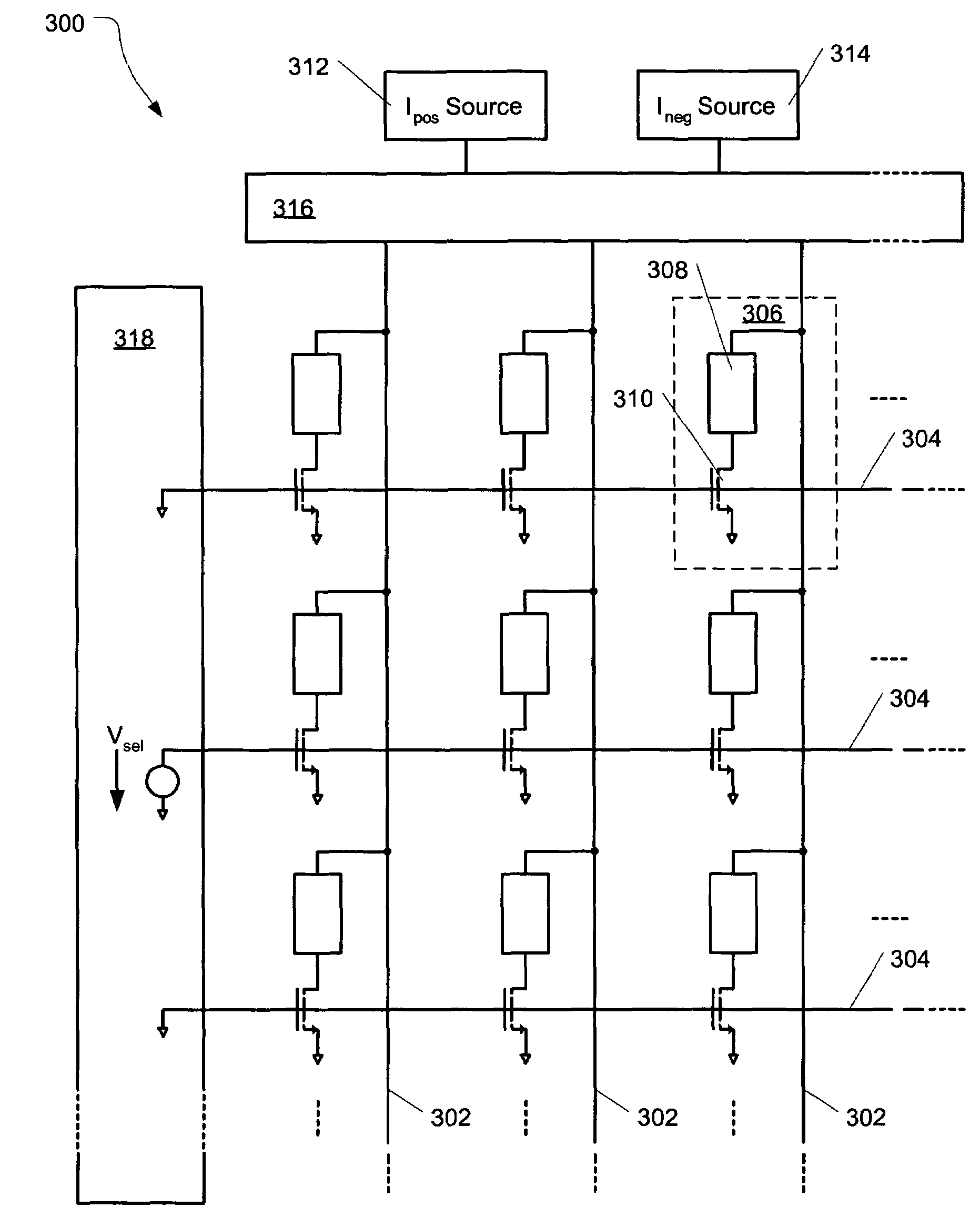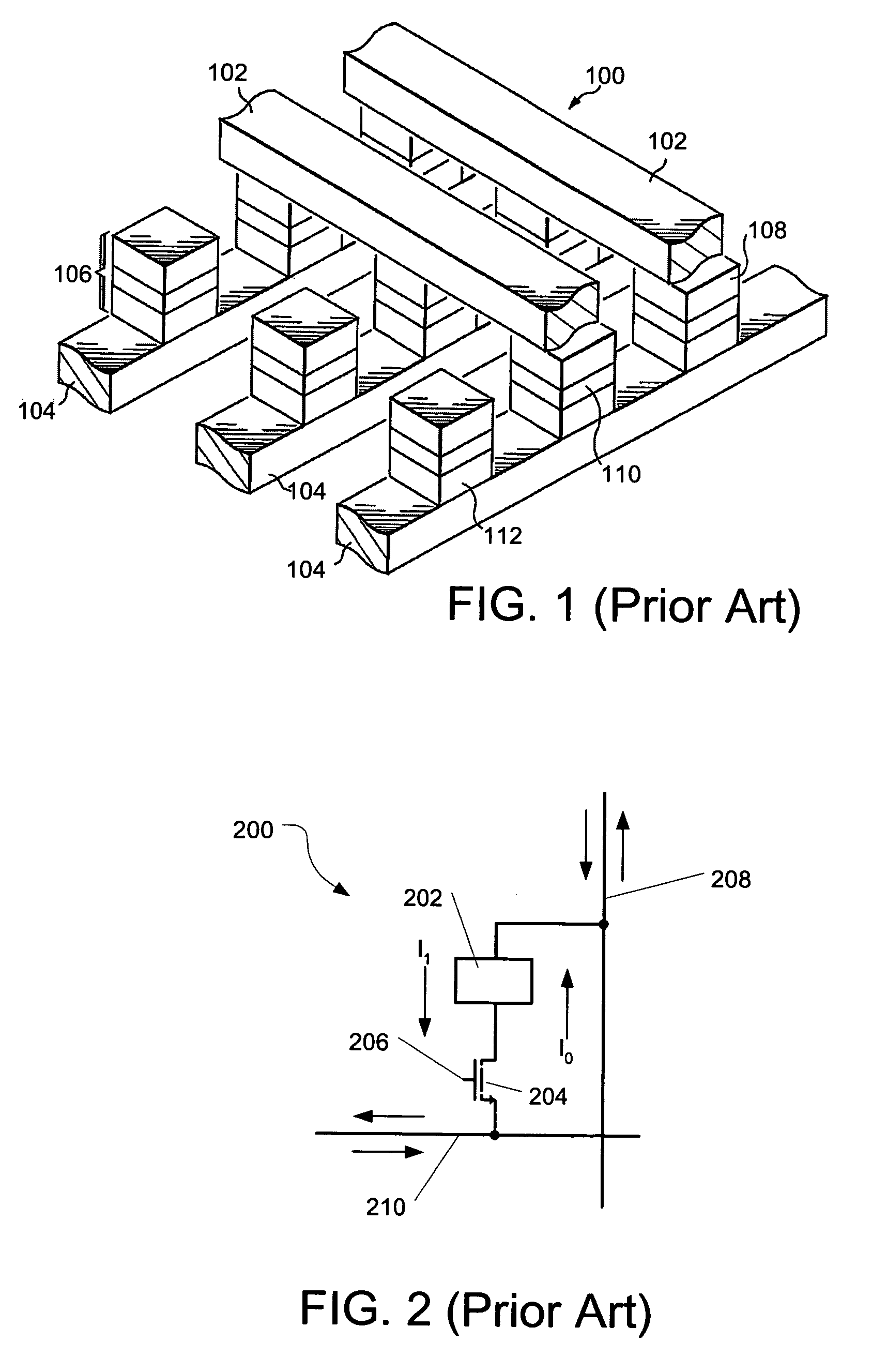Memory write circuit
a write circuit and memory technology, applied in the field of memory devices, can solve the problems of difficult reliable readout at high speeds, low signal quality of mtjs on reading, so as to reduce signal loss and noise problems, and avoid switched ground connections
- Summary
- Abstract
- Description
- Claims
- Application Information
AI Technical Summary
Benefits of technology
Problems solved by technology
Method used
Image
Examples
Embodiment Construction
[0015]FIG. 1 shows a perspective view of a typical prior art MRAM array 100 having bit lines 102 disposed in an orthogonal direction to word lines 104 in adjacent metallization layers. Magnetic memory stacks 106 are electrically coupled to the bit lines 102 and word lines 104 (collectively, write lines), and are positioned between the bit lines 102 and word lines 104 at locations where a bit line 102 crosses a word line 104. The magnetic memory stacks 106 are preferably magnetic tunnel junctions (MTJs), comprising multiple layers, including a free layer 108, a tunnel layer 110, and a fixed layer 112. The free layer 108 and fixed layer 112 preferably comprise a plurality of magnetic metal layers (not shown). These magnetic metal layers may, for example, comprise eight to twelve layers of materials such as PtMn, CoFe, Ru, and NiFe. The tunnel layer 110 comprises a dielectric, such as Al2O3.
[0016]The fixed layer 112 is preferably magnetized in a fixed direction, while the direction of ...
PUM
 Login to View More
Login to View More Abstract
Description
Claims
Application Information
 Login to View More
Login to View More - R&D
- Intellectual Property
- Life Sciences
- Materials
- Tech Scout
- Unparalleled Data Quality
- Higher Quality Content
- 60% Fewer Hallucinations
Browse by: Latest US Patents, China's latest patents, Technical Efficacy Thesaurus, Application Domain, Technology Topic, Popular Technical Reports.
© 2025 PatSnap. All rights reserved.Legal|Privacy policy|Modern Slavery Act Transparency Statement|Sitemap|About US| Contact US: help@patsnap.com



